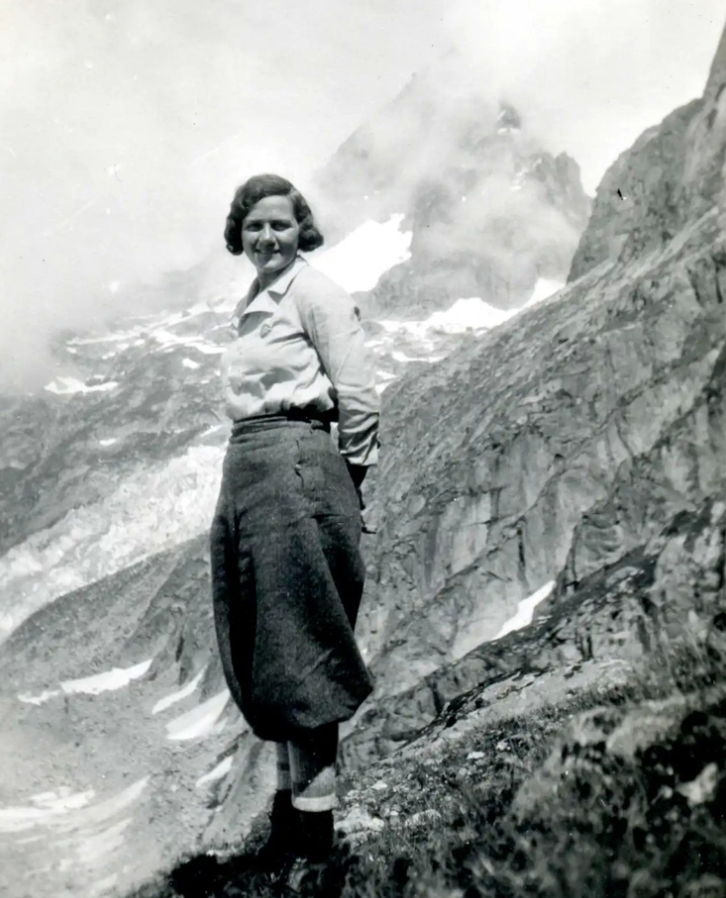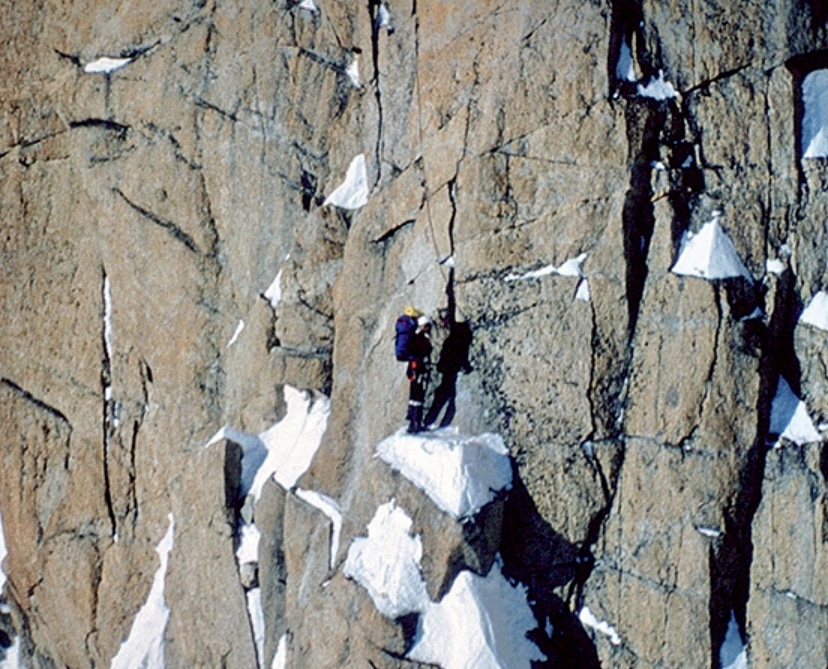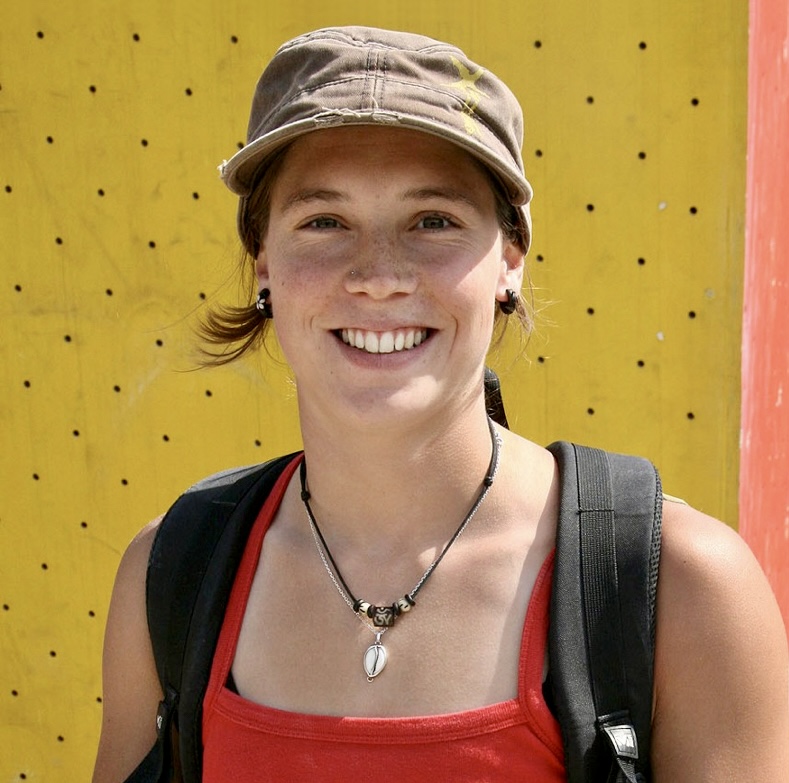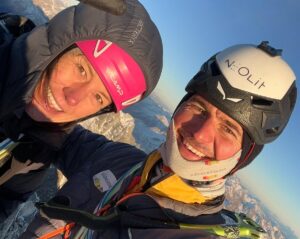From the first guided ascents of the 19th century to the solo speed records of today, the European Alps were and remain the cradle of alpinism. Any single story from its climbing history — one ascent, one tragedy, one success — inevitably leads to others.
Today, we follow that thread and tell a few of the countless stories of 3,773m Aiguille Noire de Peuterey. Also known as the Black Needle, this sharp granite tower lies on the Italian side of the Mont Blanc Massif.
One of the longest ridges of the Alps
Aiguille Noire de Peuterey is in the Aosta Valley between the Brenva and Freney Glaciers. The peak is part of the Peuterey Ridge, a 12km line of rock and ice that runs from about 1,500m in the valley to the summit of 4,810m Mont Blanc. This makes it one of the longest continuous ridges in the Alps.
To the north, the Aiguille Noire is separated from the higher 4,112m Aiguille Blanche de Peuterey by the sharp pinnacles of Les Dames Anglaises. The Aiguille Noire de Peuterey has been an important objective for climbers since the late 19th century.

The peaks of the Mont Blanc Massif. Photo: CampToCamp
Golden Age of Alpinism
Emile Rey and Jean-Baptiste Bich were two of the most accomplished Italian guides of the 19th-century’s Golden Age of Alpinism. The two Aosta Valley locals were members of the Société des Guides de Courmayeur. Rey, a Courmayeur guide who worked extensively in Chamonix, earned the informal title of Prince of Guides for his visionary route finding.
Lord Wentworth was the grandson of the poet Lord Byron. He made more than a dozen first ascents in the Alps, all with Rey. On August 5, 1877, Rey and Bich guided Wentworth to the summit of Aiguille Noire, completing its first ascent by its east-southeast ridge.

Emile Rey. Photo: Wikimedia
Preuss, the purist
In 1913, two young men wanted to ascend the South Ridge of the Black Needle, then still unclimbed. They were the Austrian purist Paul Preuss, then 26, and Count Ugo di Vallepiana, a 22-year-old Italian student of economics who became a war hero and author of Italy’s first ski manual. Preuss was a master of ropeless ascents and a fierce purist who rejected artificial aid. He looked at the 1,100m knife-edge ridge and declared, “Others will climb it. I renounce it,” as noted in David Smart’s book Paul Preuss – Lord of the Abyss.
In Preuss’s view, the route demanded pitons and ropes for safety, and other unfair means he refused to use. He had already soloed over 300 peaks without aid and believed that any climb that required gear violated a mountain’s integrity.
The same afternoon that he rejected the South Ridge, with Vallepiana watching from below, Preuss soloed the easier East Ridge of the peak in under five hours. By 4 pm, Preuss was already drinking coffee in Courmayeur, according to Count Aldo Bonacossa’s eyewitness account. Unfortunately, Preuss died a few months later, on October 3, 1913, on Mandlkogl, falling 300m to his death during a free solo.

Paul Preuss.
The first ascent of the South Ridge
In the summer of 1930, Karl Brendel and Hermann Schaller from Germany fulfilled Preuss’ prophecy, becoming the first to climb the South Ridge. Starting from Bivacco Borelli at 2,325m, the duo climbed approximately 50 pitches, first to Pointe Gamba, and then through exposed aretes, dihedrals, and difficult chimneys.
They bivouacked on a narrow ledge at Pointe Bich, roped together for safety. The next day, Brendel and Schaller summited. The two Germans, using only a few points for belays, honored to a certain degree Preuss’s free-climbing ideals. The route was graded TD+, meaning très difficile — very difficult.
The first ascent of the Peuterey Integrale
The Peuterey Integrale is the unbroken, 10 to 12km ridge on the Italian (south) face of Mont Blanc. It starts in Val Veny at 1,500m and continues to the summit of Mont Blanc. The line is one of the most committing routes of the Alps, as well as the longest. It has approximately 4,500m of vertical gain.
On July 28-31, 1934, Adolf Gottner and Ludwig Schmaderer from Germany, along with Ferdinand Krobath from Austria, carried out the first ascent of the Peuterey Integrale.
They left Val Veny with 70m hemp ropes and food for four days. They ascended the South Ridge of Aiguille Noir de Peuterey in the rain, then made 10 rappels down the Northwest Face into Breche des Dames Anglaises, below the Aiguille Blanche de Peuterey.
Traversing its southeast summit, they crossed Col Peuterey. They then ascended the rib of the Grand Pilier d’Angle and topped out on the summit of Mont Blanc on July 31.
During the four days of the climb, they made three bivouacs. Their feat was notable: Before 1934, individual peaks and sections had been climbed, but they were never linked in one push. Even today, the Peuterey Integrale is one of the ”Big Three” alpine ridge traverses.
From August 18 to 20, 1939, two young climbers from Turin, Vittorio Ratti and Luigi Vitali, climbed a bold, direct, 700m new line on the Aiguille Noire de Peuterey via the West Face. The 1939 Ratti-Vitali was one of the last major prewar ascents of the massif.

The Aiguille Noire de Peuterey, with Les Dames Anglaises, right. Photo: Wikipedia
Boccalatte and Pietrasanta, the pioneering duo
Gabriele Boccalatte (1911-1938), a trained concert pianist from Turin, and Nini Pietrasanta (1909-2000), a nurse from Milan, formed Italy’s most accomplished climbing partnership of the era. They met in Chamonix in 1932, when she treated Boccalatte’s climbing injuries. Four years later, they married and welcomed a son. Together, the couple opened technically demanding and aesthetically pure routes on Mont Blanc’s Italian side. Pietrasanta documented their climbs in 16mm films.
In August 1935, after a failed attempt one week earlier due to a storm, Boccalatte and Pietrasanta completed the first ascent of the west face and south ridge of Punta Bich, the Aiguille Noire’s sharp western pinnacle. Their climb was hailed as a masterpiece. Later that August, the duo also sent a new route on the southwest face of Aiguille Blanche de Peuterey.
Boccalatte died three years later, on August 24, 1938, in a rockfall on the south-southeast face of Aiguille de Triolet. He was only 27 years old. After his death, Pietrasanta retired from high-level climbing. She raised their son Lorenzo alone and preserved their archives.
After her death in 2000, Lorenzo found the diaries, the 16mm films, and photographs of his mother. These made possible the 2014 documentary called Nini: La Storia Ritrovata, a 2016 book entitled Oltre la Vetta, and then Pellegrina delle Alpi, which contains her notes and diaries. The Boccalatte route remains a Mont Blanc classic.

Nini Pietrasanta. Photo: Archive of the Boccalatte family via gognablog.sherpa-gate.com
Casarotto’s winter Super Integrale
In February 1982, Renato Casarotto left the Freney basin with a portaledge, stove, and food for 15 days. He wanted to create a new, harder variant of the Peuterey Integrale: the Super Integrale. And he wanted to do it in winter. His plan was to link three independent rock pillars across the south flank of the ridge.
Casarotto began on Aiguille Noire de Peuterey, soloing the Ratti-Vitali route up the West Face. The route took Casarotto three days. He then crossed snow ridges to Pico Gugliermina on Aiguille Blanche de Peuterey, and climbed the Boccalatte-Gervasutti route, which Boccalatte and Giusto Gervasutti first ascended in 1938. It took Casarotto another three days. Finally, he climbed the Bonington Central Pillar on the Freney Face, first climbed in 1961 by Chris Bonington and Don Whillans.
During his climb, a 70-hour blizzard pinned him mid-wall. Casarotto survived the ordeal on melted snow and salami. On day 15, Casarotto reached the summit of Mont Blanc. His approximately 2,500m route of ED3/4 terrain, carried out entirely in winter, self-sufficiently, remains unrepeated.

Renato Casarotto on the Central Pillar of Freney. Photo: Renato Casarotto via Planetmountain
Death of a champion
In August 2010, 23-year-old Chloe Graftiaux, a multiple World Cup champion, topped out the South Ridge of Aiguille Noire de Peuterey with a partner. During the descent, at 3,200m, a falling rock dislodged from the south face slabs and struck her. She fell 600m to the glacier below. Her death sparked global debates about descent risks.

Chloe Graftiaux during the semi-finals at the 2010 IFSC Boulder World Cup of Vienna. Photo: Manfred Werner
We recommend Alex Buisse’s Mont Blanc Lines (Editions Glenat, 2021) and the English version by Vertebrate Publishing, 2022. It is a must-have book, rendered with unmatched clarity, with impressive photos of the peaks, ridges, and climbing routes, including the Aiguille Noire.






